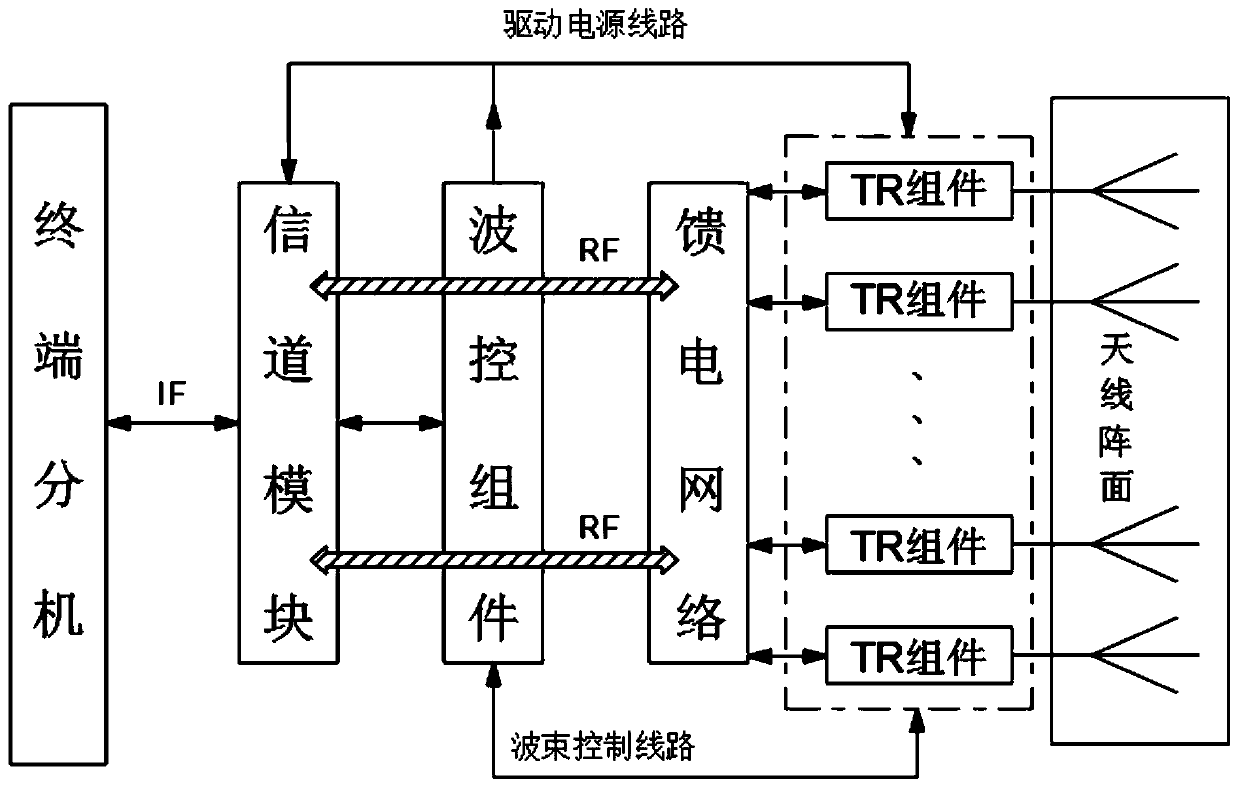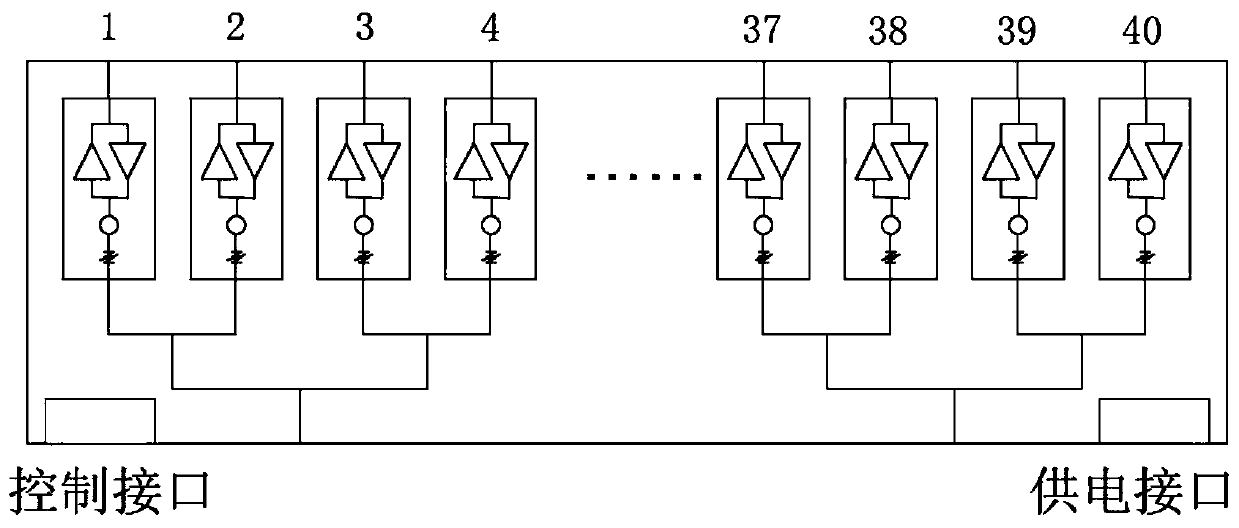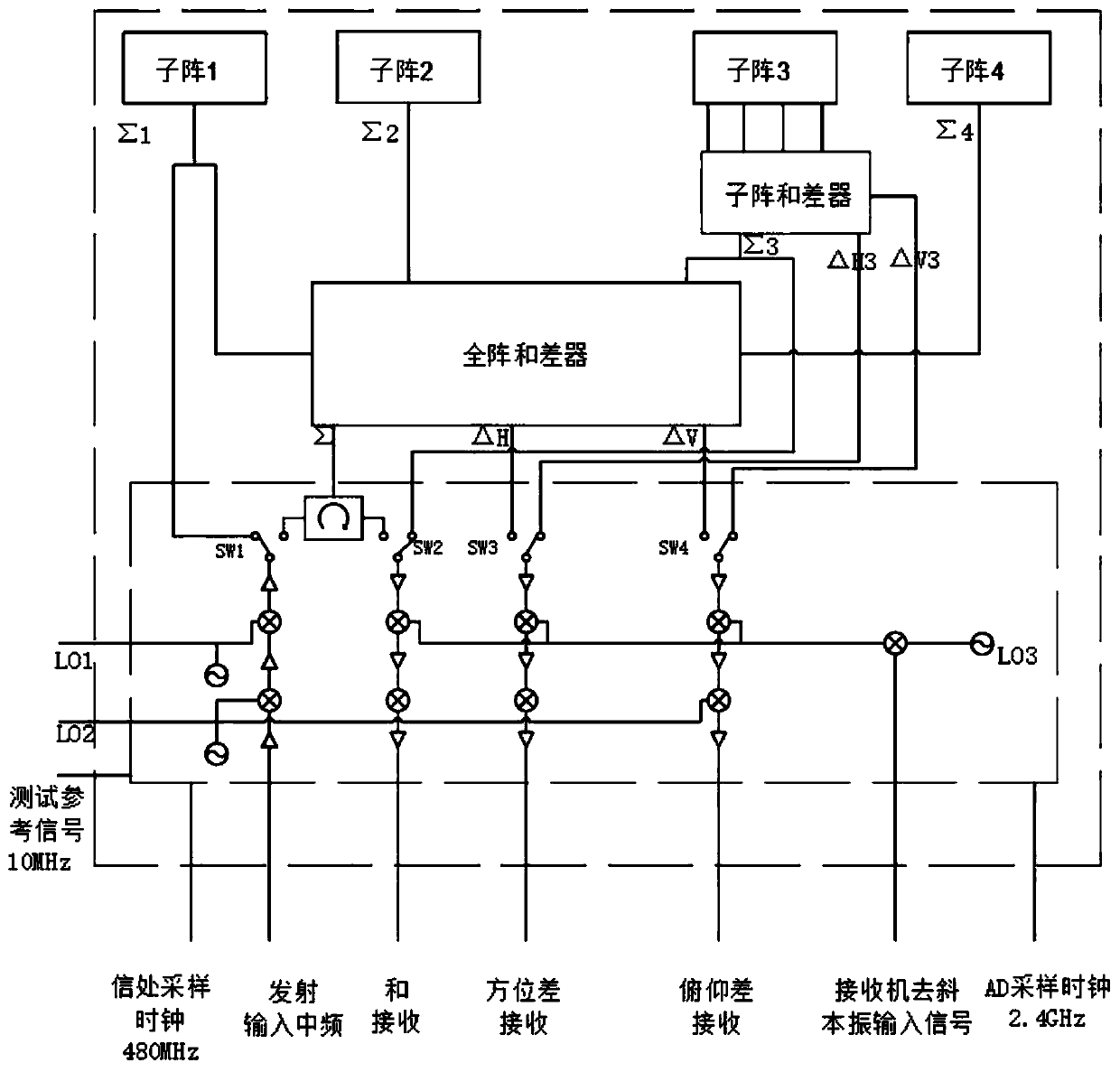Ka-waveband phased array antenna and self-calibration method thereof
A phased array antenna and self-calibration technology, applied to antennas, electrical components, etc., can solve the problems of low service life and high power consumption, and achieve the effect of simplifying the design
- Summary
- Abstract
- Description
- Claims
- Application Information
AI Technical Summary
Problems solved by technology
Method used
Image
Examples
Embodiment 1
[0061] A phased array antenna of the Ka band is disclosed in this embodiment, such as figure 1 As shown in the architecture diagram, it mainly includes an antenna component 4, a TR component 5, a feed network and a channel component 8, and a plurality of TR modules included in the TR component 5 form a transceiver channel corresponding to the antenna component 4;
[0062] When the channel component 8 receives the input signal, it is converted into a radio frequency signal and distributed into the corresponding TR module through the feed network, and is sent out by the antenna component 4 after phase and amplitude adjustment by the TR module; when the antenna component 4 The received echo signal is processed by the TR component 5 and enters the channel component 8 through the feed network, and is output by the channel component 8; it also includes receiving external beam pointing information and controlling the antenna component 4 and TR component 5 to adjust the beam parameters...
Embodiment 2
[0066] This embodiment also discloses a Ka-band phased array antenna, and the structure is also as figure 1 As shown, it mainly consists of antenna array, multiple TR modules, feed network, beam steering (power module integrated in beam steering) and channel module. The channel module assembly in this embodiment serves as the interface end of the entire antenna, and is provided with a control interface, a radio frequency interface and a power supply interface.
[0067] The radio frequency signal enters the channel module through the radio frequency interface, after being converted by the up-conversion circuit in the channel module, it is directly distributed through the full array feed network and enters the corresponding TR module, and then passes through the phase / amplitude through the transmission link in the TR module Adjust the circuit to ensure the equal amplitude and phase of each transmission path, and finally radiate from the array antenna unit after being amplified b...
Embodiment 3
[0083] This embodiment is optimized and limited on the basis of the above-mentioned embodiment 2. First, the original antenna array in this embodiment is equally divided into six sub-arrays, such as Figure 11 As shown, wherein at least one group of sub-arrays is controlled to work in the continuous transmitting and receiving mode. Compared with the above-mentioned embodiment 2, in this embodiment, a TR module is separately arranged for each sub-array, so as to achieve a better control effect.
[0084]Moreover, in the continuous receiving mode, any two of the six sub-arrays perform transmitting and receiving work at the same time; while one of the remaining four sub-arrays performs receiving work, the other performs transmitting work, and the remaining two do not work. Or two send and receive at the same time, and the remaining four two receive two transmissions. There is also a separate self-calibration network in the antenna, because of the high pointing accuracy requiremen...
PUM
 Login to View More
Login to View More Abstract
Description
Claims
Application Information
 Login to View More
Login to View More - R&D
- Intellectual Property
- Life Sciences
- Materials
- Tech Scout
- Unparalleled Data Quality
- Higher Quality Content
- 60% Fewer Hallucinations
Browse by: Latest US Patents, China's latest patents, Technical Efficacy Thesaurus, Application Domain, Technology Topic, Popular Technical Reports.
© 2025 PatSnap. All rights reserved.Legal|Privacy policy|Modern Slavery Act Transparency Statement|Sitemap|About US| Contact US: help@patsnap.com



